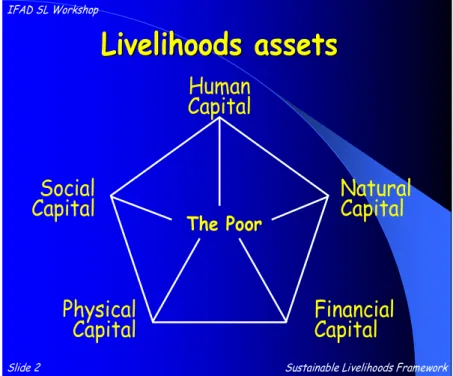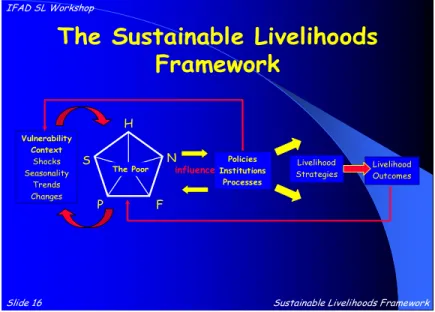UNAIDS (2007) notes that sub-Saharan Africa is the epicenter of the epidemic, with an estimated 22.5 million people said to be living with HIV at the end of 2007. According to UNAIDS (2007), sub-Saharan Africa is considered the epicenter of the epidemic, with an estimated 22.5 million people said to be living with HIV at the end of 2007.
Statement of the problem
The epidemic has exacerbated poverty and exacerbated a myriad of deprivations in sub-Saharan Africa (Steinberg et al 2003). There is a high HIV/AIDS prevalence as a result of the interaction between these characteristics of poverty and unemployment.
Objectives
Research questions
Structure of dissertation
CHAPTER TWO LITERATURE REVIEW
- Effects of HIV/AIDS on household economics
- Survival Strategies
- NGO Support
- Supporting the Income and Basic Needs of HIV/AIDS Affected Households (SIMBA) Program
- The Catholic Relief Services
- Conclusion
The indirect costs of HIV/AIDS are associated with the loss of income of the sick person and the caregiver (Booysen et al. The ultimate objective of the program is to improve the stability of families affected by HIV/AIDS.
CHAPTER THREE
CONTEXT OF STUDY
- Introduction
- Land Reform
- Operation Murambatsvina/Restore Order
- Food Insecurity
- Food Shortages
- Reduction in agricultural outputs
- Operation Maguta
- Basic Commodity Supply Side Intervention (BACOSSI) Facility
- Economic problems
- Price Control
- Economic Recovery Programs
- Coping Strategies
- Collapse of the Health System
- Shortages of staff and drugs
- HIV/AIDS
- The Cholera epidemic
- Summary and Conclusion
In 2005, the government launched Operation Maguta5 under the auspices of the Zimbabwe National Defense Army (ZNDA) in an effort to increase food production (IRIN, 2008). For many, however, the economic crisis dates back to the introduction of the World Bank's Economic Structural Adjustment Programs (ESAP). The current political and economic chaos has had a catastrophic effect on the functioning of the healthcare system; the country's public health system has virtually collapsed.
This illegal drug market is increasingly flourishing due to the high cost and scarcity of the drugs. USAID (2004) argues that this decline in life expectancy is a consequence of the HIV/AIDS epidemic. According to the World Health Organization, more than 71% of deaths were outside health facilities, as many health facilities were not operational.
CHAPTER FOUR METHODOLOGY
Research Design
Conceptual Framework
The sustainable livelihood approach consists of two components; it is the framework and a set of principles. An understanding of the complexity and integrated nature of livelihoods allows for a better understanding of vulnerability to external shocks and stress” (Toner and Franks, 2006). This approach therefore provided an understanding of household livelihoods in the context of the prevailing economic situation in Zimbabwe. As a second principle, the sustainable livelihoods approach recognizes that livelihood strategies are dynamic as they flexibly respond to changing situations and therefore advocate the affected parties. must be key actors in identifying and addressing livelihood priorities.
At the heart of the sustainable livelihoods approach is the sustainable livelihoods framework, which serves to examine and understand people's livelihoods taking into account the key influencing factors. The framework consists of Livelihood Assets, Livelihood Strategies and Livelihood Outcomes as indicated in the diagram below (Fig 2). Livelihood assets are the resources that people possess, human capital includes people's health, nutrition, education, knowledge and skills; social capital consists of the networks and informal groups people have in a community, and financial capital consists of savings, wages and credit.
Livelihoods assetsLivelihoods assets
The Sustainable Livelihoods Framework
- Site of study
- Sample and sampling method
- Data collection
- Data analysis
- Ethical considerations
- Limitations
- Summary and Conclusion
The same households that participated in the semi-structured interviews were observed over a short period of time to gain insight into the nature. Respondents were informed about the nature and intention of the research before the interviews. Due to the sensitivity of the subject, all steps have been taken to ensure anonymity and confidentiality.
When presenting the data, real names were not used, but pseudonyms were used, and households were given numerical codes. The current economic and political instability in Zimbabwe may have adversely affected the results of the study. The methodology of the study was presented, which included the research design, sampling methods, and data collection instruments.
CHAPTER FIVE
FINDINGS AND ANALYSIS
Introduction
Case Studies
This helped reduce household expenses; however, there are still medical expenses that must be covered by Ms. Dudzai's meager income. Mrs. Winnet is caring for her husband, Mr. Cephas, who is currently undergoing treatment for tuberculosis. Mr. Cephas' illness meant a loss of household income, leaving Mrs. Winnet's income for household maintenance and medical expenses.
Due to the nature of Ms Winnet's existence, she is unable to provide adequate care for her husband as she will be gone most of the night. Ms Winnet's brother is a tailor in Kadoma, but due to his illness he could not participate in any livelihood activity. Income generated from this activity is supposed to cover the household's costs which include food; transport; school fees and sanitary (soap; cotton wool; antiseptic) requirements for Ms Natsai.
Effects of HIV/AIDS on Households
- Effects of Illness on household finances
Before he became ill, Mr Simon of household 8 was involved in numerous income generating activities which included the buying and selling of mobile phones, forex transactions and the sale of airtime, mainly black market activities. Six households indicated that more time was spent performing care tasks than income-generating activities. As a result, Mrs Sarudzai is unable to perform any income generating activity as a result of this caring role.
For example, Mrs. Zivai regularly has to rent a car to take her son to the hospital. Similarly, in household number seven, Mrs. Sarudzai cannot afford to constantly take her son to the hospital for treatment. This has become quite expensive for her because she has to rent a car to take her son to the hospital.
Unemployment
As a mining and farming town, Chegutu has suffered greatly from political instability; During the land reforms, a large majority of agricultural workers were retrenched as the 'new farmers' reduced their production and thus reduced their workforce. Unemployment is therefore a major concern as the majority of the population in this small and 'economically dead' city is unemployed. The majority of the population is unemployed and so even if people try to engage in income generating activities, turnover will be low, they are all too poor to spend money.
The focus group discussion also pointed out that it is difficult for AIDS-affected households to seek stability and sustainability in income-generating activities as the primary goal is survival, i.e. F2: It is difficult to engage in income-generating activities while the week is over. looking for food and medicine to stay alive. It is difficult to seek stability and sustainability in an economy that is itself volatile and extremely unstable.
Livelihood Strategies
- Use of Savings
- Sale of Assets
- Barter trading
- Informal Sector Activities
- Assistance from extended family
According to the World Bank (1997), selling assets is one of the most common household responses to the impact of HIV/AIDS. Of the households surveyed, six out of eight indicated that they engaged in fruit selling as a livelihood activity before being affected by HIV/AIDS. Mrs Winnet's livelihood activity entails long working hours and runs throughout the week regardless of the weather.
Money earned from a day's work at the market or street sales is contributed when the members meet at the end of the working day. Despite this, participants/commercial sex workers continue to engage in this livelihood activity as it is one of the few profitable activities left in the country. With 80% unemployment and widespread poverty, illegal activities have become commonplace.
The Dual Role
When Mr. Simon became ill and was no longer financially active, all six children were placed with relatives. Of the households surveyed, it seems that household number five has the biggest challenges, as there is only one carer and eleven care recipients. Mrs Vongai has ten grandchildren to look after as well as her chronically ill daughter Mrs Mavis.
This little girl you see (about 5 years old) carries firewood to sell as small as she is. She never has any of the children's fathers (This jar you see is not enough, I have to make another one.). In two of the households, the carers themselves were too old and sick to take on the extra role of income earner.
External Assistance
F1: Another problem is the CD4 counting machine, Chegutu doesn't have one so you have to get on a bus and go to the nearest town either Kadoma or Kutama. 15 pairs of gloves, a pin for the umbilical cord, a candle for night birth, 20 l of water, cotton and soap. F2: Sometimes the local clinic takes blood and sends it to Kadoma for CD4 count, but due to lack of fuel as well as power cuts, the blood samples always clot before going to Kadoma and you don't get your refund, you end up gone there three or four times experiencing the same problem.
When one finally gets a CD4 count and is placed under the program, there is the challenge of accessing the treatment. In household number five, Mrs Vongai took her daughter to hospital four times in an attempt to see the doctor who visits the hospital once a week and sees a total of 20 patients per visit. Faith In Community Aiders is a small community-based organization (CBO) that provides care and support to households affected by AIDS.
Catholic Relief Services
- The Chronically Ill Programme: Rationale for Food Aid
Summary and Conclusion
CHAPTER SIX
SUMMARY, CONCLUSION AND RECOMMENDATIONS
Introduction
Summary and conclusion
The town is also plagued by massive unemployment due to the closure of mines and the rapid land reform. The land resettlement and redistribution program led to the downsizing of the agricultural service industry and the layoff of farm workers as commercial production was disrupted. Service delivery in public health facilities is a major concern; observations and interactions in the field helped shed light on this, for example patients had to make numerous and futile trips to the doctor in addition to the shortage of CD4 counting machines, as mentioned in detail in the previous chapter.
Similar to other studies (Mutangadura et al, 2007; Naidu, 2004; Booysen et al, 2004; The use of informal credit schemes was also evident, although uncommon, unlike traditional credit unions in Zimbabwe, which revolve and changed every month, rotations were done daily due to hyper-inflation and inability to save. The study also found that these livelihoods are not sustainable as families are not coping with both HIV/AIDS and economic shock, but " they're just surviving."
Recommendations
- Macro-level Recommendations
- Micro-level Recommendations
In addition, the study shed light on the challenges of households affected by HIV/AIDS in an already adverse environment such as Zimbabwe. International HIV/AIDS Alliance (2008) Effects of HIV/AIDS on Children's Education www.ovcsupport.net/sw476.asp. A pilot study of the impact of HIV/AIDS on the income economy of an urban household in Soweto, South Africa, where women use public health facilities.
Sustainable Livelihoods Approaches and the HIV/AIDS Epidemic. 2005) “Chronic ill households, food security and coping strategies in rural Zimbabwe”. Paper presented at the conference on HIV/AIDS and food and nutrition security, 14-16 April. www.ifpri.org/events/conferences/2005/durban/papers/senefeldWP.pdf. 2003). Hitting Home – How Households Cope with the Impact of the HIV/AIDS Epidemic.’ A study of households affected by HIV/AIDS in South Africa.
Interview Guide: CRS Officials
Informed Consent Form

